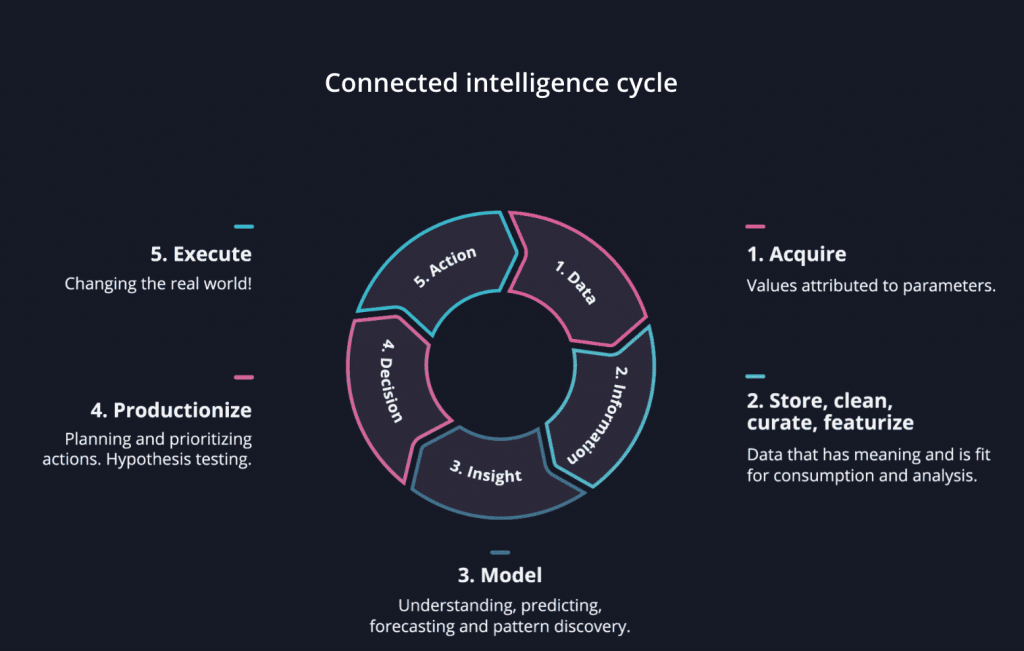In the future, ubiquitous AI voice-driven shopping assistants will even make purchasing decisions for users if desired, says this expert.
Intelligent algorithms are already proving to dramatically create value and improve user experience. The technology promises a wide range of benefits, for instance making government services more responsive, cities more inclusive for citizens and businesses more competitive.
Economists project that by 2030, the transformative nature of AI could boost global GDP by more than US$15 trillion. This trend is expected to accelerate in the coming years due to faster hardware, more data and new scientific breakthroughs arising from the huge global research investments into AI.
Given the inevitable rise of AI, how can businesses leverage this technology to achieve breakthroughs in 2020 and beyond, especially since becoming an AI-driven company requires major fundamental shifts in a firm’s culture?
Transitioning out of “Ripe-For-Disruption”
What exactly does it mean for an organization to become “AI-Driven”? Companies have to improve their capabilities along two fundamental axes: the ability for insight creation and the capacity for continuous adoption of new solutions and improved approaches based on these insights.

First, they must excel in their ability to create insights out of their data. “Data-savvy” companies are using data science and machine learning approaches to model reality based on data. They are able to forecast important business parameters like customer demand, market behavior and price developments consistently in real-time.
Along the other axis, companies have to improve their ability of continuous adoption of better solutions and processes based on insights. Agile enterprises have installed continuous delivery (CD) frameworks for their software development processes to almost instantly adapt their IT systems to leverage these new insights.
Decisioning using intelligence-driven data
Machine learning and AI enable organizations to turn data into a strategic resource. By capturing the trends and patterns that signal change is coming, these tools give the enterprise time to prepare and act, often one step ahead of the competition. But while technology provides the foundation, it is the ability to take data and factor it into key decisions and the development of new business hypotheses that defines the higher levels of digital fluency.
If we look at the overall process of how data and information flow through an enterprise we recognize a cycle of intelligence. In most companies, this circular flow is often broken and full of friction: teams work in isolation, data is managed in silos, most of the steps are done manually and without structure.
Typically, running through the whole circle can take months or even years. However, AI-driven enterprises will have automated the whole cycle with techniques like CD for Machine Learning (CD4ML). They are able to change their business processes based on new data and insights generated in hours—and several times a day!
AI to change the commerce game
Development of AI and deep learning also promises to bring about huge changes in consumer behavior—what is being called “voice commerce”.
In the future, we will encounter voice assistants everywhere, and shopping assistants that use AI will change the rules of the game when it comes to customers’ purchasing behavior; they can even make purchasing decisions for the customer if desired. This trend is supported by a study carried out by analytics firm ComScore, which forecasts that by the end of 2020, over half of all online searches will be done using a voice assistant.

Just like with web browsers and mobile phone operating systems, we can safely assume that a few voice assistants will establish themselves as the market standard. One of the reasons for this is because of the large data sets that are needed to develop highly-specialized algorithms that are needed for a functioning digital assistant.
The winners in this field are likely to be those companies that can create voice assistants that feel familiar and natural for consumers to easily adapt to. Brand new design paradigms for conversations with voice assistants and their personalities will also need to be developed in order for voice assistants to stand-out.
Intelligent empowerment with AI
Ultimately, the key to leveraging AI today is recognizing what it is and what it is not.
It is critical that we do not fall into the trap of replacing too large of a workflow with AI algorithms. Human judgement is still by far the best approach to many business tasks. Human tasks which are primarily based on pattern recognition or perception are ripe for AI solutions.
If businesses can focus AI on what it does well, achieving breakthroughs and scaling new heights can be a reality.
